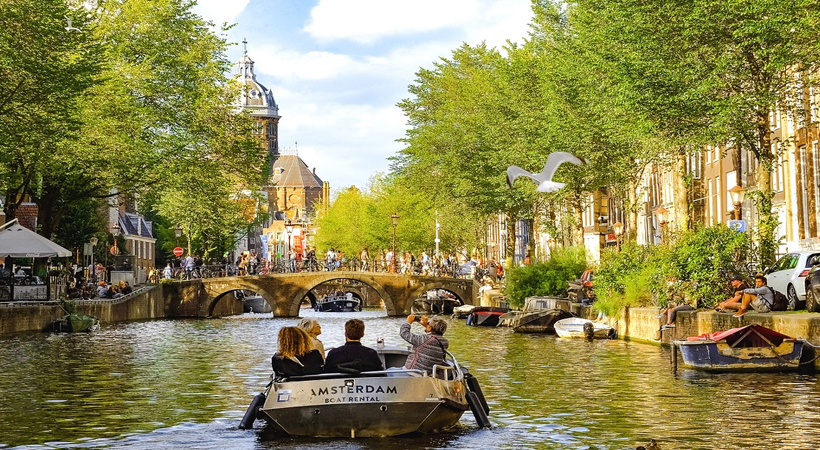Pandemic Mission: Amsterdam 2.0

The world is today a slow coach. The coronavirus crisis has helped people to stop and think. Tourism destinations worldwide are pausing to reflect on their business models and Amsterdam is one among them.
Last year, 19 million tourists visited Amsterdam bringing in more than 6 billion euros ($6.8 billion) in revenue, according to a Bloomberg report.
But the city is facing an existential crisis.
In a way, Amsterdam has been over-run by tourism. There is no other way to put it. International visitors come into the city in large numbers during peak season and locals often feel side-lined. Not that they do not benefit from this. Of course, they do. Tourists bring in incredible revenues and are global ambassadors for the city.
But the real issue is, whose city is it anyway?
In May, Amsterdam Mayor Femke Halsema set out to create a plan to lower the city’s tourism quotient. In a letter to the local council she stated that commercial property buying should be controlled in the city centre. She also wanted to ensure that the old city is not just dotted with shops selling souvenirs and cannabis, the Bloomberg report stated.
The mayor wanted companies where residents can work, houses where they can live and grocery stores and outlets that cater to them.
The virus crisis underlined “the urgency to think about the city centre of the future” Halsema said in the letter. Amsterdam, residents believe, has become a city for tourists and not for the locals.
“It painfully showed how few people actually live in the centre and how little it has to offer locals,” said the Bloomberg report quoting Mascha ten Bruggencate, who chairs the council of Amsterdam’s central district. “We need to change that. My dream is that the city centre will continue to be a vibrant place, but one where visitors are visitors, and not the main event,” she said. “It should be a place where locals live, work and do their thing.”
There is also the issue of sex tourism to consider. The scantily clad sex workers in brothel windows is a unique Amsterdam feature. The red-light district here has always attracted the tourists, especially from outside Europe. But sex workers have disappeared now, as the pandemic has driven away travellers. However, brothels that thrive on tourists are not keen to leave.
Prostitutes who work in the 330 window brothels in the red-light district consider the area, as a safe place for them, said the Bloomberg report. The pandemic has hit the sex business hard. Many sex workers have gone back home to eastern Europe or work illegally. And although brothels are set to reopen in September, they expect to generate only 30% of normal revenue as tourists mostly stay away, according to the Bloomberg article.
Coffee shops on historic plazas like Rembrandtplein and Leidseplein also wear an empty look now. Visitors used to descend upon the city by the thousands for the cannabis they sell. But the pandemic has driven them away as well and business in these cannabis joints are down by 50%.
The pandemic has led to an effort to reclaim the city centre from tourists.
In April, the Bloomberg report said, Adyen NV, one of the country’s most successful fintech firms said it will rent a 17,000 square-metre office in the heart of the city. The company, which processes payments for the likes of Uber Technologies Inc., Ebay Inc. and Booking.com Ltd., said it was drawn by the neighbourhood’s retail activity.
The Bloomberg report said that the key piece of the government’s plan to reconfigure Amsterdam is to get brothels to move out of the old city and curb coffee shops that serve tourists. That won’t be easy. An effort over a decade ago to buy out more than 100 window brothels backfired as the value of the property tumbled with no high-end businesses wanting to move in.
Local authorities have discussed and implemented multiple ideas over the years, like restrictions on tourist rentals and a ban on stores that cater to them. The council has even tried to buy out brothel owners to get them to move out, the Bloomberg report said.
The liberal approach to sex, drugs and parties, not to mention old Amsterdam’s quaint cobbled streets, canals and narrow colorful town houses, make the city a popular tourist destination. But over the years, like in Venice and Barcelona, floods of visitors have overwhelmed local lives — from puking stoners to prostitute stalkers, the Bloomberg report added.
Things got so bad that some residents pasted photos of themselves in their windows with a sign that said, “I Live Here.”



